Sunday journal entry... (Here is a link to the hourly forecast for Isfjord Radio from the Norway Meteorological Institute. It even has an English version. http://www.yr.no/sted/Norge/Svalbard/Isfjord_radio/time_for_time.html)While our fearless leaders ventured back to the lake to complete a number of tasks, Saturday was used by the Svalbard REU students to prepare their proposals for their field projects. In the evening we heard half of the proposals, and the rest were saved to this evening. You will hear about these projects as the expedition continues. I can tell you that I was impressed, and if they were my students I would be very proud of their ability to think like scientists and to take on physically ambitious projects. Stay tuned!
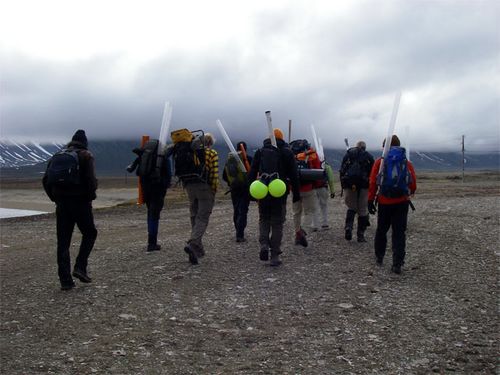 The majority of the equipment needed in the field must be carried out.
The majority of the equipment needed in the field must be carried out.
Important to field research is an orientation to the field site, and we used today to survey Lake Kongress. It can be seen in both geology images in the previous journal entry. To find it, look to the southeast corner of Lake Linne on the geologic bedrock image, and to the upper left on the air photo image. I'm not sure if you can make out the terrain in those images, but the lake is up a sizeable hill that was a bit of a challenge to climb. When we set out today we were warned that it was going to rain at 1PM, and no sooner did we finish lunch at 1PM the rain started and continued, and continued, and continued. Fortunately we heeded the warnings of our PI's and we all had the enough of the right clothing to ward off the drops.
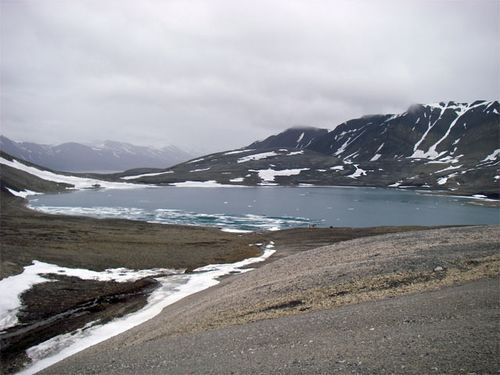 Lake Kongress is the other lake we are interested in and is located up a hill from Lake Linne
Lake Kongress is the other lake we are interested in and is located up a hill from Lake Linne
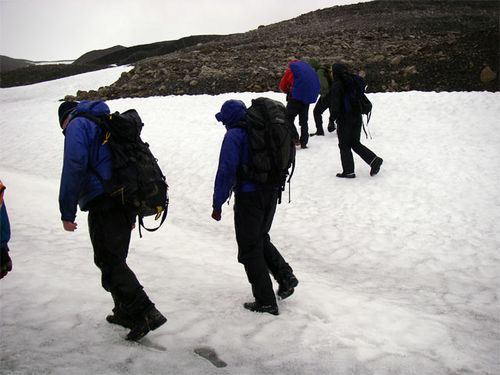 This is one water source for Lake Kongress
This is one water source for Lake Kongress
We continue over the hill and saw this picturesque lake in a bowl shaped arena and were in awe at its beauty. Closer to the lake, Mike and Al noticed that the lake level has gone considerably since the last time they were there. This was curious because there is no obvious drainage outlet for this lake. This will be something for us to ponder while we're up here. We walked halfway around the lake over numerous moraines consisting of rock from the surrounding mountains, and tried to piece together the glacial history of the lake, and the moraines. Our quest to solve the mystery took us up one of the moraines to it's and there we found the Little Ice Age moraine from a little less than 100 years ago. It's one thing to read about geology and see pictures and it's another to be in the middle of it with the expert scientists there to point out all the pieces of the story. Who cared about the rain, we were recreating the glacial history of the Linne Valley and Lake Kongress! After frolicking in the snow and ice at Lake Kongress, it was back to the field station to hear the rest of the student proposals, and to get a good night's sleep.
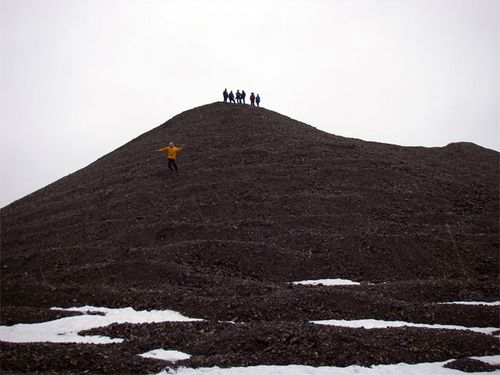 Modeling a technique for descending this ice cored moraine from the Little Ice Age
Modeling a technique for descending this ice cored moraine from the Little Ice Age
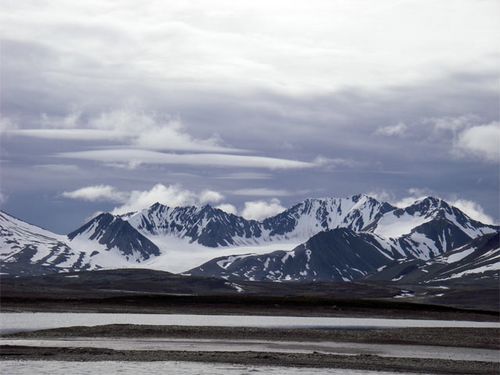 The views here are spectacular!
The views here are spectacular!
Question of the day: Given the position of Lake Kongress, which formation do you think the rocks are from - the Hecla Hoek on the east, or the Carboniferous formations on the west? Refer to yesterday's entry for a clue.

